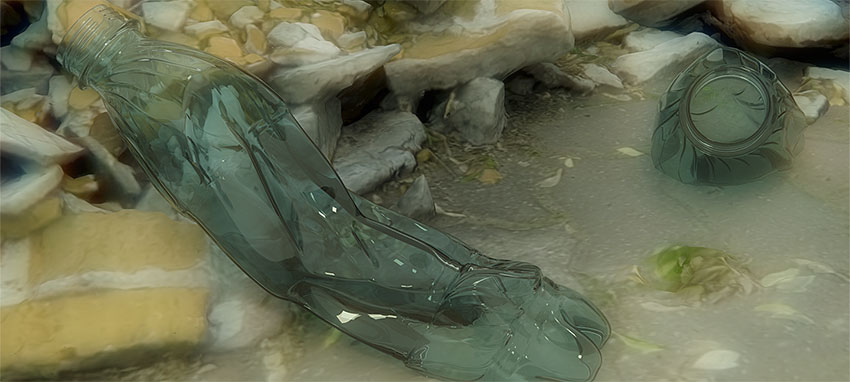Text by Laura Netz

Somerset House presented Hyper Functional, Ultra Healthy, a programme of six newly commissioned artworks related to wellness as the optimisation of mental and physical wellbeing. Considering that we are living what is perceived as the wellness culture risk, the programme aimed to present answers to reconsider well-being in new and unexpected ways, contesting to wellness industry which is leading to societal pressures and unrealistic and anxiety-inducing desire to be healthy, happy and productive.
The artworks exhibited included Natasha Trotman, Stine Deja and Rowdy SS. Natasha Trotman’s Subset/Reset combines imagery and poetry to highlight particular neurodivergent perspectives. It explores non-normative perceptions and experiences of every day, trials, triumphs and challenges through the contributions of its participants. As an artist, inclusive designer, maker and researcher focusing on mental difference and neurodiversity, Natasha’s work examines different ways of experiencing and processing the world – from people with hidden disabilities and neurodivergent communities such as people with dyspraxia and autism, through to people living with dementia; she also works with neurotypical people.
Stine Deja’s Cryptic Ruins video presents a post-apocalyptic future in the year 21020, where an archaeological site has found the rests of a gym pertaining to another era, which is depicted with features such as the compulsion towards physical fitness and the absurdity of contemporary urban life. Stine Deja’s works include media such as 3D animation, immersive installation, moving image, and digital surrogates to simulated spaces, uncanny avatars, and not-quite-real products, which provoke fascination and revulsion with our hyper-commercialized contemporary culture.
Cryptic Ruins playful film reveals questions about the rationality of our obsessions. Nevertheless, these obsessions, the cult to the body and the extreme importance of body beauty, are not new to our society, as it demonstrates the ancient Greek civilization, where the most awarded athletes were those with better bodies. Even classical Greek sculpture reaffirms this tendency to the beauty of the body, naked, and with extreme elegance even sublimating the elements of naturalness and well-being in culture.
Furthermore, the obsessive trend that expanded the Nazi regime can be highlighted in this long tradition of beauty and body worship. The Nazi regime was based on various racist doctrines according to which the Nordic peoples – the so-called pure Aryans – were not only physically superior to other races but also their culture and morals, as well as specific philosophical doctrines that idealised the State or exalted the cult of superior individuals, who were exempted from abiding by conventional limitations. The abuse of power of Nazism led to the more than well-known historical barbarie.

Currently, the regime of contemporary power or late-capitalism is also shielded in the politicisation of well-being and the dominance of the body as an object of the individual. In his Biopolitics theory, Foucault exemplified how power structures are organised based on the monitoring and control of subjectivity.
Rowdy SS, Is This The End? presented a sound experience and live performance inside their sound installation that synthesises the ceaseless urban noise of London to create a new soundscape of refuge and respite. London is noisy: sirens, drilling, honking, shouting, the endless grind of traffic—the Tube. From stress to heart disease to type 2 diabetes, research suggests that noise pollution creates problems for people’s health. For ten years Rowdy SS has been recording London’s damaging noise. In this new work, he remixes this archive to create a soundscape for healing.
The live performances complemented the programme further; Hyperbaric by Leah Clements is based on a very simple scenography, where the visual elements are just four actors sitting on the floor with a mattress in the middle of the room. The audience sitting surrounding the actors soon realises that what is related is a true experience in the first person. A real-life transposed into a performance. The character’s speeches are about people withdrawing from opioids intake, out-of-body experience, and violence. The performers are relating their personal experiences while being kept inwards due to illness, physical or mental. The audience perceives the performer’s hardcore experiences, arising feelings of sadness and empathy. The result is depressing but touching.
Leah Clements‘s performance says a lot about tragedy narratives and brings back to mind the Aristotelian aesthetic narrative of the ancient Greek tragedy, where audiences always emphasise the subject. Here there are no actors, this is real life, and the erasing of the actor leads to interrogating contemporaneous societal crisis of ethical values. The performance reproduces a hyperbaric chamber, an enclosed tank pressuring air to treat decompression sickness, carbon monoxide poisoning, and other illnesses that benefit from concentrated oxygen absorption. The minimalist appearance corresponds to the sound work, too. The intensity increases slowly and gradually, highlighting the bass frequencies, a very minimalistic and straightforward composition accompanying the performers’ narration.
Hyperbaric reflects the time spent living in a confined environment for medical reasons, and it is positioned thus of rabid actuality considering the problem with the Coronavirus and all the citizens who are suffering and living in confined hospitals due to the outbreak of the virus.






